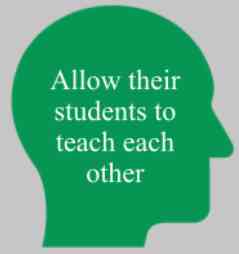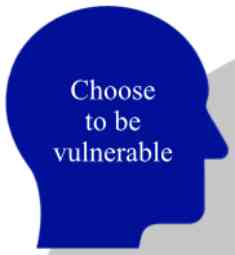Proverbs 24:16 - "For though the righteous fall seven times, they rise again, but the wicked stumble when calamity strikes."
Modern teachers actively invite mistakes into their lives, fostering a classroom culture where errors are viewed not as failures but as valuable learning opportunities. By normalizing mistakes, they create an environment where students feel safe to take risks and explore new ideas without the fear of being judged. This approach aligns with the concept of "productive failure," introduced by Kapur and Bielaczyc (2012), which suggests that encountering and struggling with problems before receiving direct instruction leads to deeper understanding and retention of knowledge. When teachers model this mindset, they help students develop resilience and a growth mindset, encouraging them to see mistakes as a natural and essential part of the learning process rather than something to be avoided.
Creating a culture that embraces mistakes also enhances critical thinking and problem-solving skills among students. When errors are openly discussed and analyzed, students learn to approach problems from multiple angles and develop more robust strategies for overcoming challenges. This reflective practice not only improves their academic performance but also prepares them for real-world situations where the ability to learn from failure is crucial. According to Brookhart (2010), formative assessment practices that include constructive feedback on mistakes can significantly improve student learning outcomes. By inviting mistakes into their lives and encouraging students to learn from them, teachers cultivate a classroom environment that promotes continuous improvement, innovation, and a lifelong love of learning.
9. Dream big and ask "Why not?"

Ephesians 3:20 - "Now to him who is able to do immeasurably more than all we ask or imagine, according to his power that is at work within us."
Modern teachers are ambitious and visionary, inspiring their students to think creatively and ambitiously. They cultivate an environment where dreaming big is not only encouraged but expected. By posing the question "Why not?", teachers challenge both themselves and their students to push boundaries and explore possibilities that might initially seem out of reach. This approach fosters a growth mindset, where students learn to view challenges as opportunities for growth rather than insurmountable obstacles. Such an attitude helps students to develop resilience, critical thinking, and a proactive approach to learning and problem-solving (Dweck, 2006). By encouraging students to envision bold goals and pursue them with confidence, teachers create a classroom culture that values innovation and perseverance.
In this rapidly evolving educational landscape, teachers who dream big and encourage their students to ask "Why not?" play a pivotal role in preparing the next generation for future challenges. They move beyond traditional teaching methods, embracing innovative and experiential learning opportunities that stimulate curiosity and creativity. These educators understand that the world is continuously changing and that preparing students for the future involves equipping them with the skills and mindset necessary to navigate and shape that change. By embodying a visionary and ambitious spirit, modern teachers inspire students to imagine new possibilities and to strive towards achieving them, thus fostering a culture of innovation and excellence in education (Robinson, 2011). This visionary approach not only benefits individual students but also contributes to the broader goal of advancing society through education.
10. Allow their students to teach each other

Romans 12:4-5 - "For just as each of us has one body with many members, and these members do not all have the same function, so in Christ we, though many, form one body, and each member belongs to all the others."
Modern teachers actively promote peer learning, recognizing the immense value of students teaching and learning from one another. This approach, known as peer-assisted learning (PAL), leverages the social and collaborative aspects of education, allowing students to engage more deeply with the material by explaining concepts to their peers. By facilitating peer teaching, educators create a dynamic and interactive learning environment where students are encouraged to articulate their understanding, ask questions, and engage in critical thinking. This method not only reinforces the students' own knowledge but also enhances their communication and leadership skills (Topping, 2005).
Moreover, peer learning fosters a sense of community and shared responsibility within the classroom. Students often feel more comfortable and less intimidated when learning from their peers, which can lead to increased participation and engagement. Teachers who embrace this strategy understand that learning is a social process and that students can offer diverse perspectives and insights that enrich the educational experience. By allowing students to teach each other, modern educators cultivate an inclusive and supportive learning environment where every student has the opportunity to contribute and grow. This approach aligns with contemporary educational theories that emphasize the importance of collaborative and active learning (Vygotsky, 1978).























